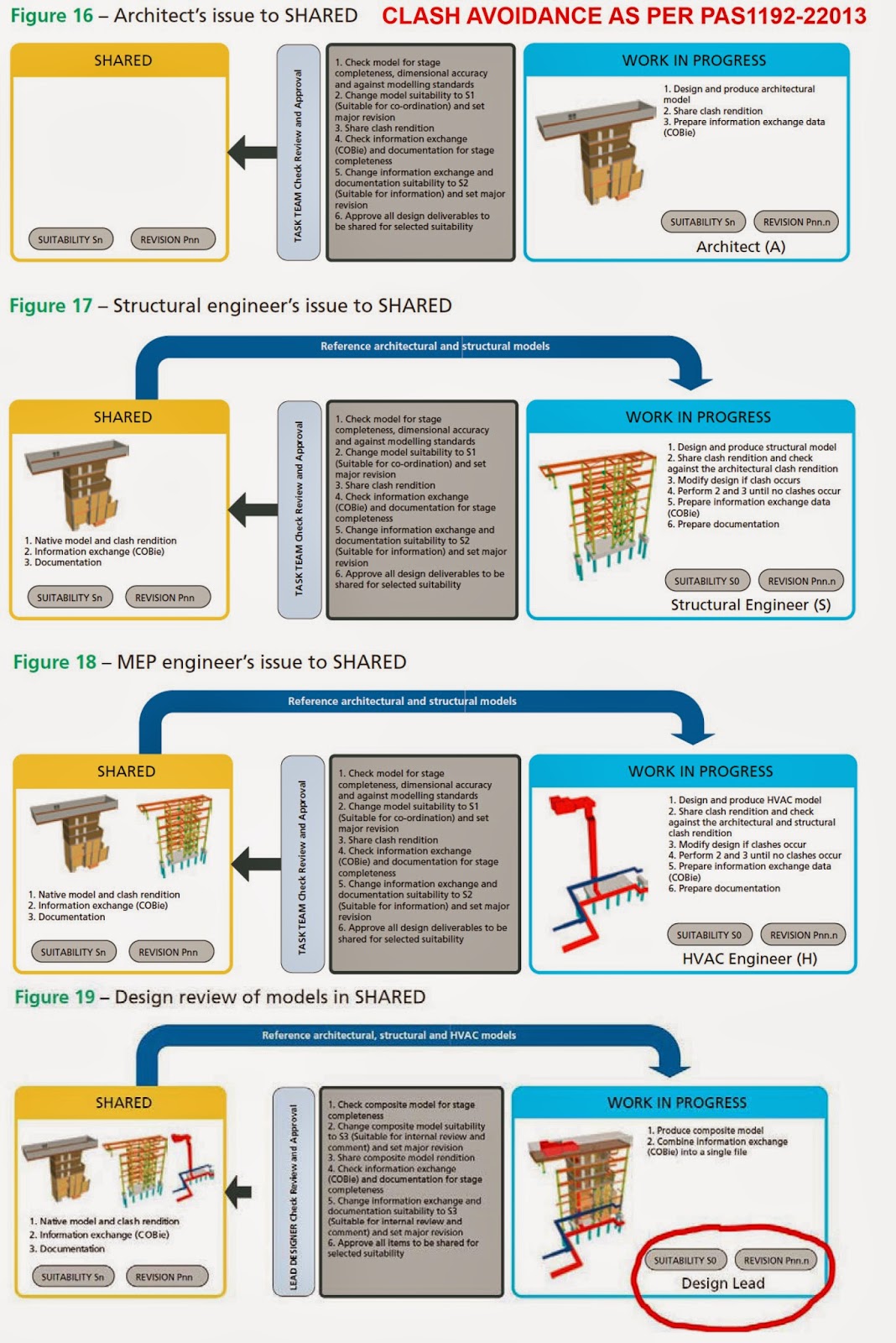Friday, 29 November 2013
Proactive BIM vs Reactive BIM
Before I leave for AU tomorrow, I thought I share some of my thoughts on these two fundamentally different BIM approaches.
After I tweeted about this few weeks ago I got couple of DMs asking to explain the difference between the two, and one was from a Client. Which was very encouraging.
So here we go!
ASSUMPTION MADE: The readers know the meaning of three words: Proactive, Reactive and BIM.
PROACTIVE BIM
When the project team is using BIM proactively (Proactive BIM), the design coordination happens automatically and clashes are identified and resolved as you design. If the clash cannot be resolved because it involves other discipline(s) then you raise that in your next possible design review workshop. PAS1192-2:2013 explains this process quite clearly.
The closest analogy of this process is comparing this with Health & Safety on sites. The contractors community focuses on avoiding accidents on site in the first place rather then spending their energy in counting accidents and then report them and fix them. Can they be fixed? NO, because here we have lives involved and once accident happened it happened and we cannot fix it.
Likewise, Proactive BIM lets you focuses on avoiding design clashes to happen in the first place. The focus is not on clash counting (clash detection), reporting them and fix them.
WHAT ARE THE SIGNS OF PROACTIVE BIM
If all key members of the project team have each others' models linked in their authoring BIM software constantly while developing their BIM model then you know they are being proactive in avoiding clashes.
REACTIVE BIM
Reactive BIM is just that, reactive. If you are relying on "clash detection" to tell you how many clashes your design has and then fix them then you are doing "Reactive BIM", which defeats the whole purpose of using BIM for improved design coordination. I don't want to write more on this as 'Reactive BIM' is a dead end for me so no point wasting my time/energy on it.
WHAT ARE THE SIGNS OF REACTIVE BIM
There are many. But one of the signs is, when you see the team is relying on a third party BIM consultant to tell them how many clashes they have and then fix them then it is Reactive BIM.
Clients want to see Proactive BIM so that they receive well coordinated design at every step of the project, inherently. Smart clients are using clash detection to QA check the level of design coordination.
So to summarize this, Proactive BIM is the way forward and clash detection is the way to QA check level of design coordination.
After I tweeted about this few weeks ago I got couple of DMs asking to explain the difference between the two, and one was from a Client. Which was very encouraging.
So here we go!
ASSUMPTION MADE: The readers know the meaning of three words: Proactive, Reactive and BIM.
PROACTIVE BIM
When the project team is using BIM proactively (Proactive BIM), the design coordination happens automatically and clashes are identified and resolved as you design. If the clash cannot be resolved because it involves other discipline(s) then you raise that in your next possible design review workshop. PAS1192-2:2013 explains this process quite clearly.
 |
| Image Courtesy: PAS1192-2:2013 |
The closest analogy of this process is comparing this with Health & Safety on sites. The contractors community focuses on avoiding accidents on site in the first place rather then spending their energy in counting accidents and then report them and fix them. Can they be fixed? NO, because here we have lives involved and once accident happened it happened and we cannot fix it.
Likewise, Proactive BIM lets you focuses on avoiding design clashes to happen in the first place. The focus is not on clash counting (clash detection), reporting them and fix them.
WHAT ARE THE SIGNS OF PROACTIVE BIM
If all key members of the project team have each others' models linked in their authoring BIM software constantly while developing their BIM model then you know they are being proactive in avoiding clashes.
REACTIVE BIM
Reactive BIM is just that, reactive. If you are relying on "clash detection" to tell you how many clashes your design has and then fix them then you are doing "Reactive BIM", which defeats the whole purpose of using BIM for improved design coordination. I don't want to write more on this as 'Reactive BIM' is a dead end for me so no point wasting my time/energy on it.
WHAT ARE THE SIGNS OF REACTIVE BIM
There are many. But one of the signs is, when you see the team is relying on a third party BIM consultant to tell them how many clashes they have and then fix them then it is Reactive BIM.
Clients want to see Proactive BIM so that they receive well coordinated design at every step of the project, inherently. Smart clients are using clash detection to QA check the level of design coordination.
So to summarize this, Proactive BIM is the way forward and clash detection is the way to QA check level of design coordination.
Subscribe to:
Comments (Atom)
